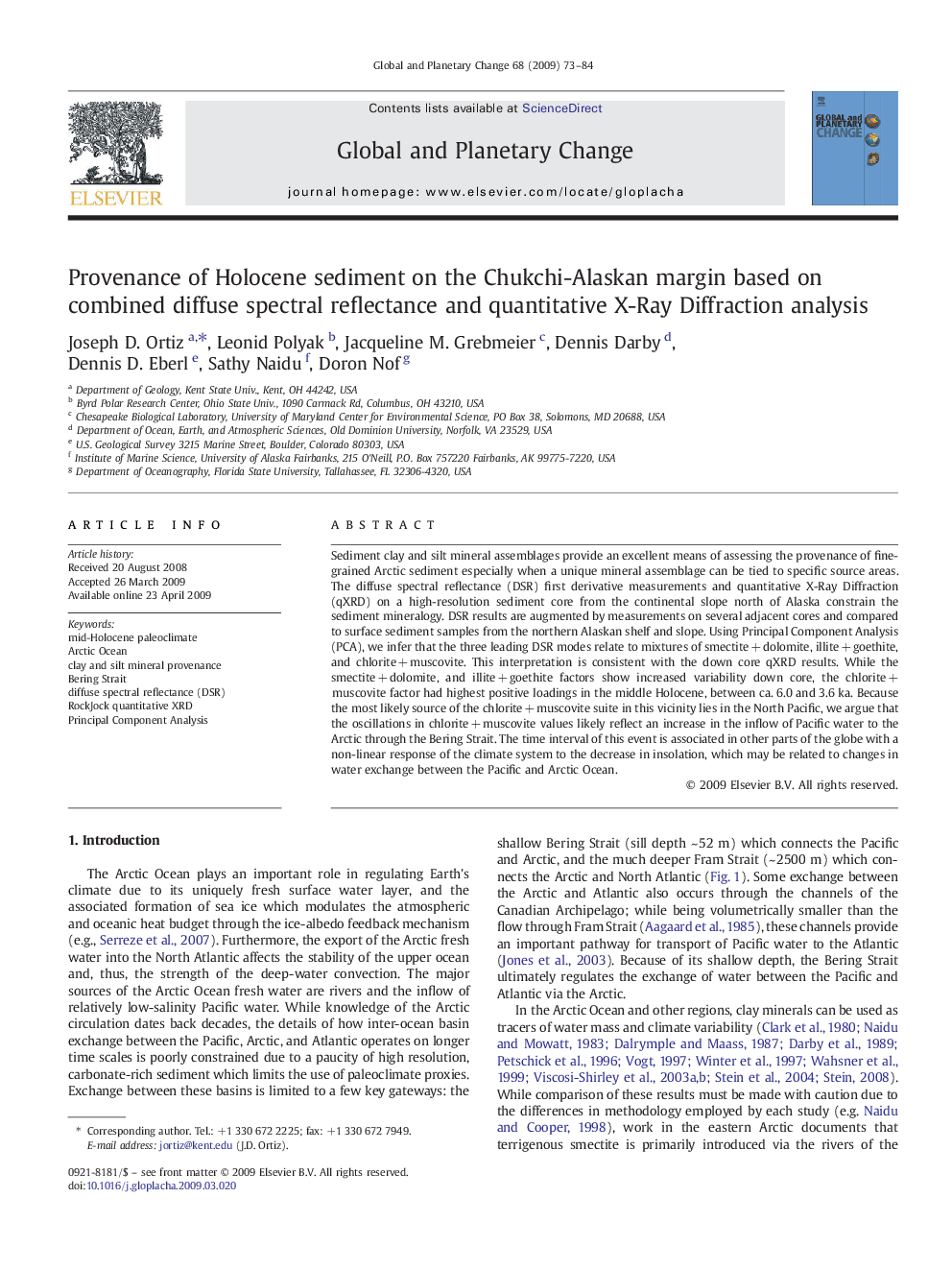| Article ID | Journal | Published Year | Pages | File Type |
|---|---|---|---|---|
| 4464036 | Global and Planetary Change | 2009 | 12 Pages |
Sediment clay and silt mineral assemblages provide an excellent means of assessing the provenance of fine-grained Arctic sediment especially when a unique mineral assemblage can be tied to specific source areas. The diffuse spectral reflectance (DSR) first derivative measurements and quantitative X-Ray Diffraction (qXRD) on a high-resolution sediment core from the continental slope north of Alaska constrain the sediment mineralogy. DSR results are augmented by measurements on several adjacent cores and compared to surface sediment samples from the northern Alaskan shelf and slope. Using Principal Component Analysis (PCA), we infer that the three leading DSR modes relate to mixtures of smectite + dolomite, illite + goethite, and chlorite + muscovite. This interpretation is consistent with the down core qXRD results. While the smectite + dolomite, and illite + goethite factors show increased variability down core, the chlorite + muscovite factor had highest positive loadings in the middle Holocene, between ca. 6.0 and 3.6 ka. Because the most likely source of the chlorite + muscovite suite in this vicinity lies in the North Pacific, we argue that the oscillations in chlorite + muscovite values likely reflect an increase in the inflow of Pacific water to the Arctic through the Bering Strait. The time interval of this event is associated in other parts of the globe with a non-linear response of the climate system to the decrease in insolation, which may be related to changes in water exchange between the Pacific and Arctic Ocean.
